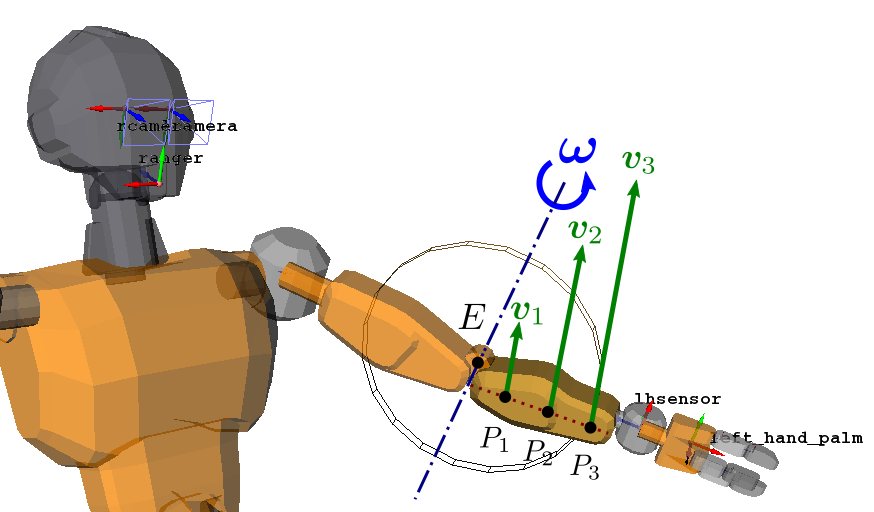Body screws
Body screws have a number of interesting properties. For one, if we are
choosing inertial frames with zero relative velocities, e.g. ground-attached
frames (NB: this is the standard), then the coordinates of our body screws
don't depend on the particular inertial frame W we pick. Let us
consider the example of the velocity twist BvWB, which is the
derivative of the Plücker transform XWB. By definition,
X˙WB=[WvWB×]XWB=XWB[BvWB×]For further digging, this is a particular case of equation (2.45) in
Featherstone (2008). It
generalizes to Plücker transforms the derivative of a rotation matrix:
R˙WB=[WωWB×]RWB=RWB[BωWB×]Now, suppose we have a second inertial frame C such that
X˙CW=0. We have on the one hand:
X˙CB=XCWX˙WB=XCWXWBBvWB=XCBBvWB=XCBBvCBBut on the other hand, the same property that applies to W applies to
C:
X˙CB=[CvCB×]XCB=XCB[BvCB×]Since XCB is invertible, this means that BvCB=BvWB. This shows that the twist coordinates of a body velocity do
not depend on the inertial frame they were computed in. While spatial velocity
coordinates WvWB depend on both the frame W and the
point B they are taken at (here we assume the point P for
moment coordinates coincides with the origin of B to avoid a third
parameter), the body velocity is simply BvB.
Note how this property, which applies to twist of transformation groups in
general, is in particular true angular velocities (which are twists for the
orthogonal group, see pointers on Lie algebra below): a spatial angular
velocity is WωWB, the angular velocity from body to world
expressed in the world frame, but a body angular velocity is often abbreviated
BωB, the body angular velocity of B.




